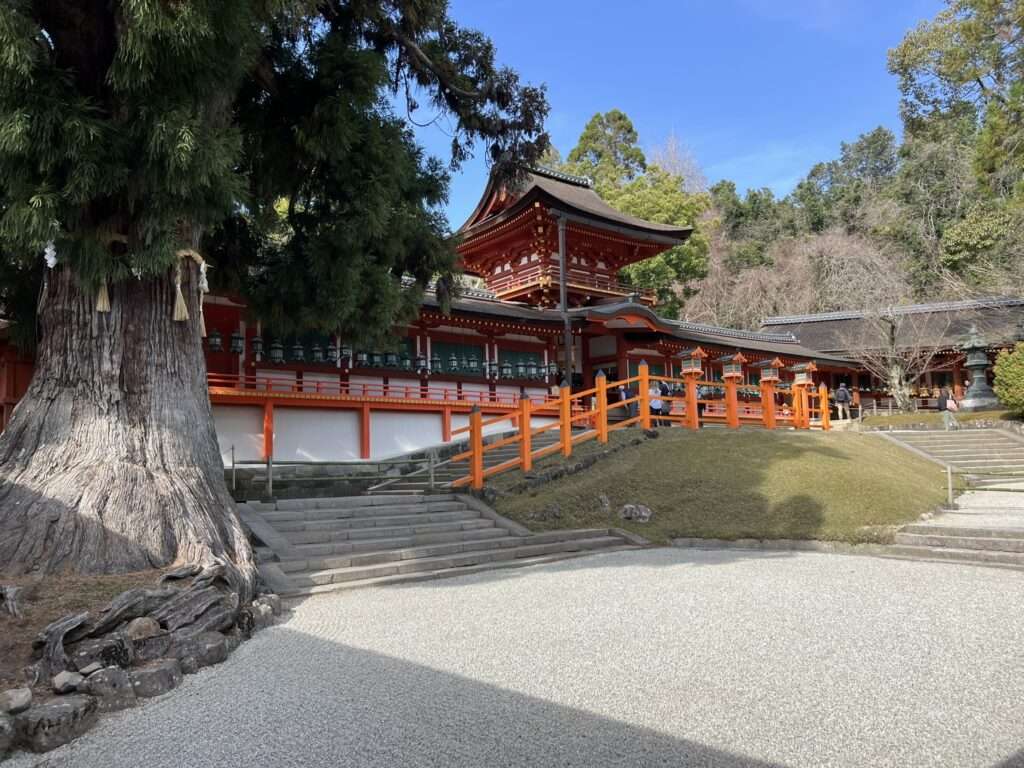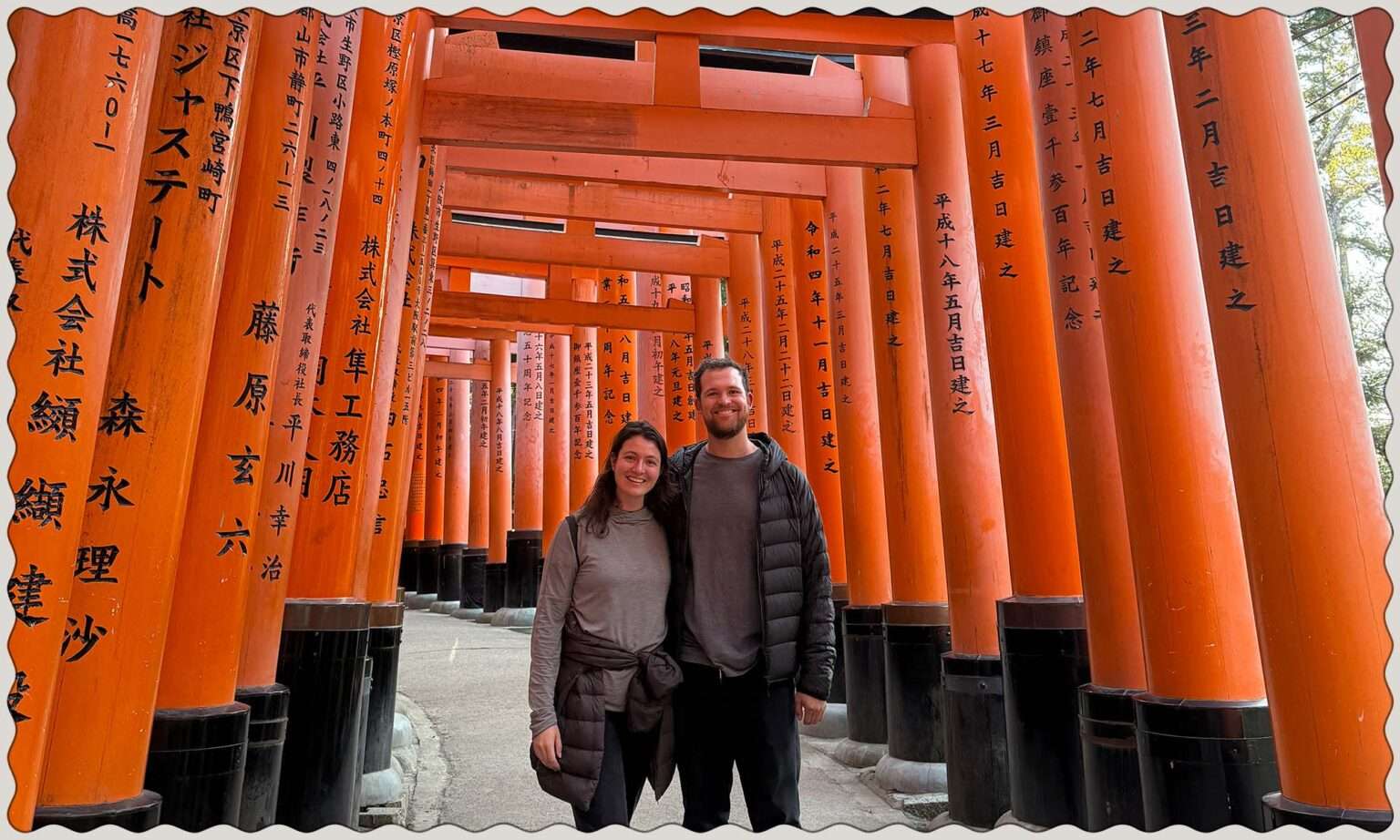Kyoto, Japan is one of Japan’s oldest municipalities and is considered the cultural capital of the country. The city is only about a 2.5 hour bullet train ride from Tokyo and is one of the most popular places for tourists to visit due to its traditional offerings.
Destination Overview
Kyoto and Nara, Japan
The city is home to thousands of Buddhist temples and Shinto shrines which are well preserved because the area was largely spared from the World War 2 bombing campaigns. In addition to the traditional buildings, the geisha culture is still prominent in a few districts throughout the city as is kaiseki formal dining. Beyond the historical significance of Kyoto, Japan, it remains a thriving modern city but with a much slower pace of life than Tokyo or Osaka. While not offering as extensive of a transit system as Tokyo, the combination of city bus and rail network make it seamless to explore all Kyoto has to offer.
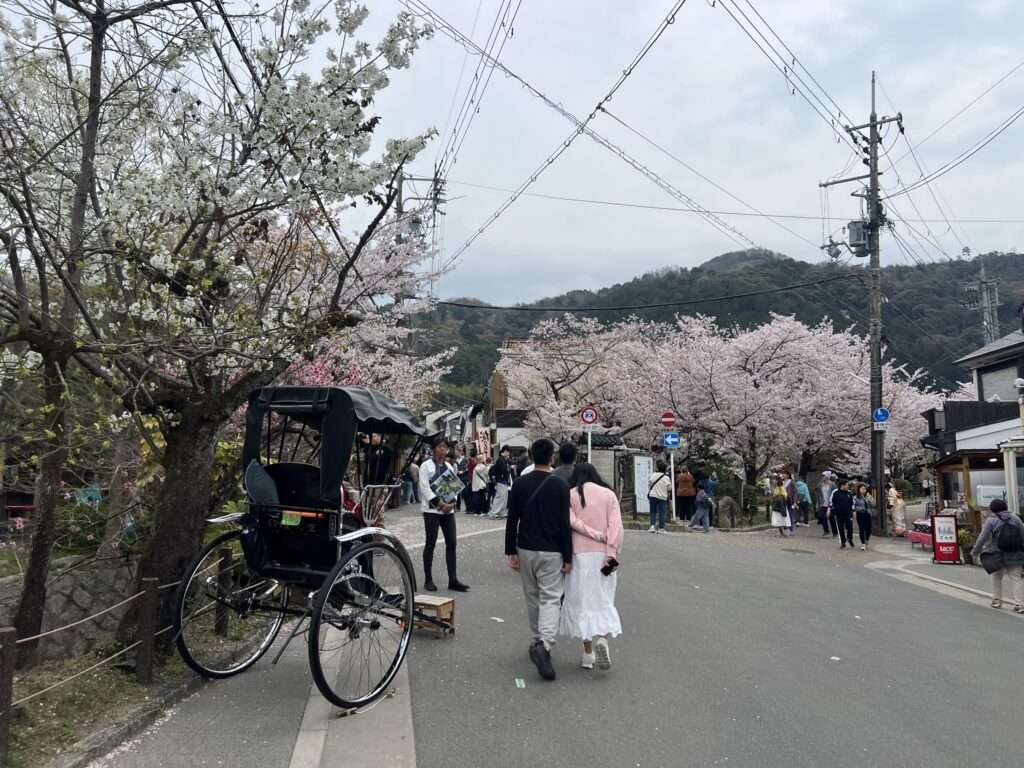
Upon arriving at Kyoto Station we were impressed by the massive 15 story modern railway station but overwhelmed by the volume of tourists visiting the city. We knew in advance that it was a popular place to visit, especially during the Sakura (Cherry Blossom) season but only truly grasped the magnitude of people when we saw it first hand at the station. We had a plan of places we wanted to visit during our time in Kyoto such as Fushimi Inari Taisha, Kinkajuji Temple, Arashiyama, and Kiyomizu-dera Temple. However, we were worried that we would have trouble just walking around popular areas due to the volume of people, and decided that we would have to arrive early or stay late when visiting the most famous parts of Kyoto during our trip.
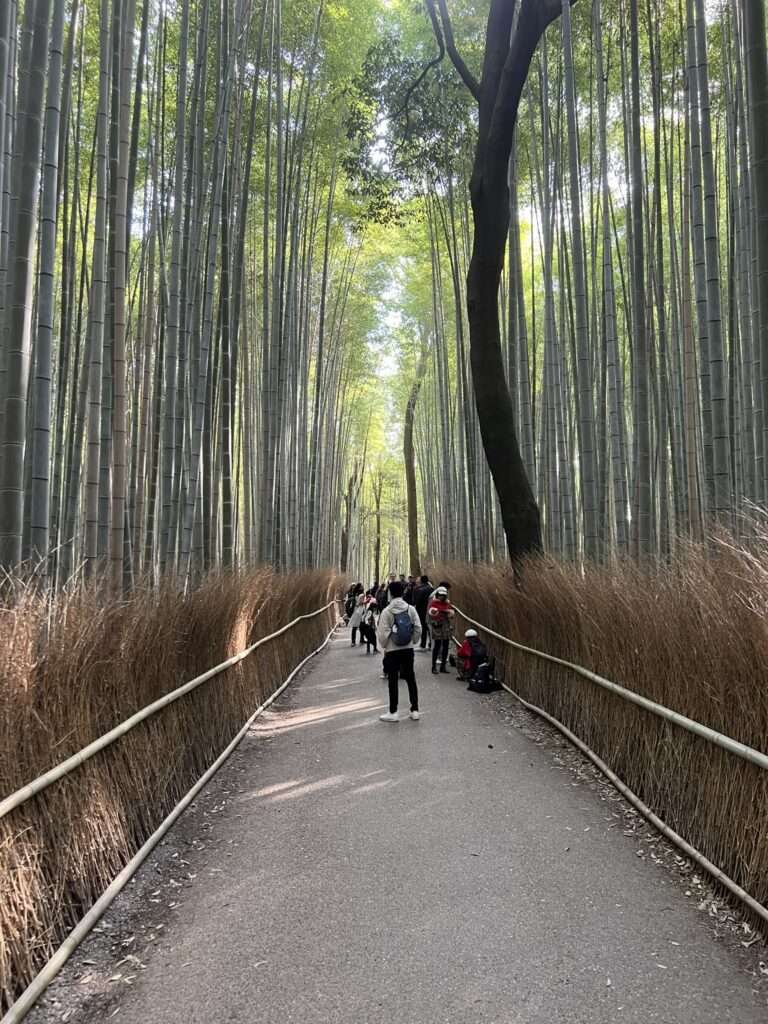
On our first day exploring Kyoto, Japan we arrived at the Higashiyama Ward shortly after sunrise. Besides a few Instagram lines of people the streets were deserted, and we could stroll through the historic streets in peace. Arriving early allowed us to explore the Kiyomizu-dera Temple before tour groups arrived, and we enjoyed this iconic Buddhist temple overlooking the city in a relatively quiet setting. As we wrapped up our walk around the temple area, we passed back through the Higashiyama Ward and all of the streets were now packed with people. While walking through the historical area we noticed signs explaining how tourists should behave in Kyoto with reminders to stay quiet in residential areas, not litter, not to take photos of prohibited areas, and to never smoke on public streets. Later in the day when on a walking tour to learn more about the geisha culture of Kyoto, our guide told us that the severe over tourism has greatly impacted life in Kyoto, Japan. In particular the geisha entertainers face harassment from tourists and now have special streets blocked off so they can move freely without being bothered. It was sad to learn about the bad tourist behavior but a good reminder to always do your best to adhere to the local customs in a polite way when visiting a different culture.
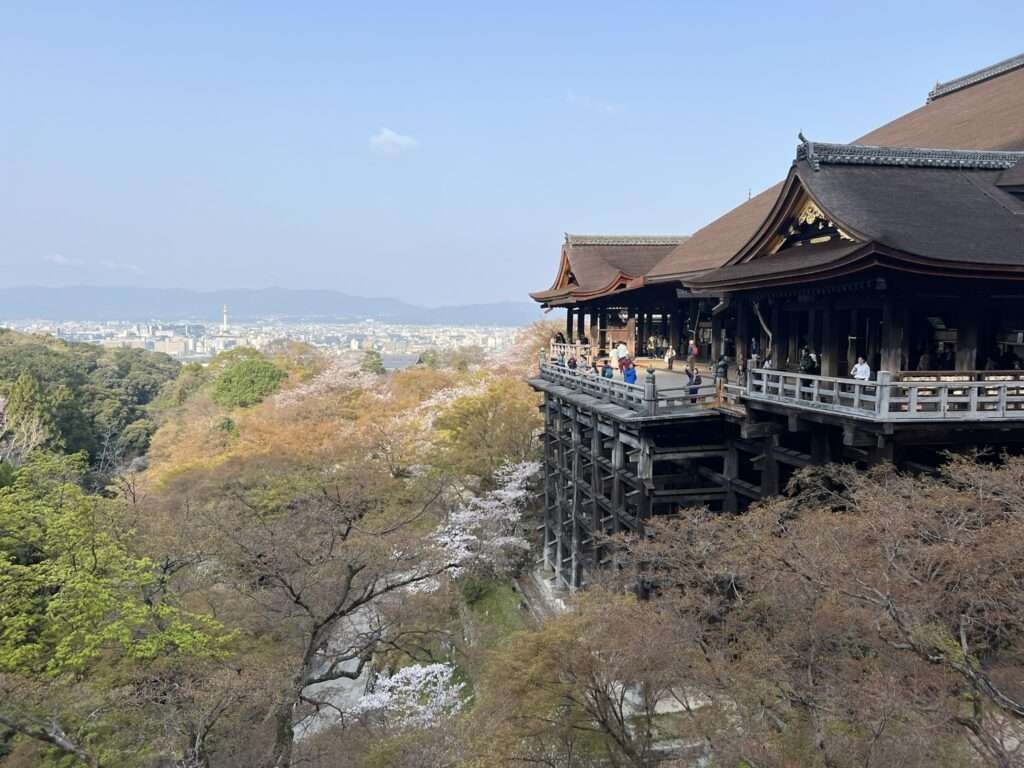
Where to Read More
An Interesting Fact
Kyoto Served as Japan’s Capital for over 1,000 years
Kyoto (formerly called Heian-kyō) became the capital of Japan in 794 when Emperor Kanmu relocated it from the nearby Nara and the city retained its designation as capital until 1868 when it was moved to Edo (now called Tokyo). During the course of over a 1,000 years as the capital, many important shrines, temples, and structures were built around the city which can still be visited today. During our time in Kyoto, Japan we had the opportunity to visit some of these incredible places to experience the culturally significant aspects of the city’s past still being preserved today.
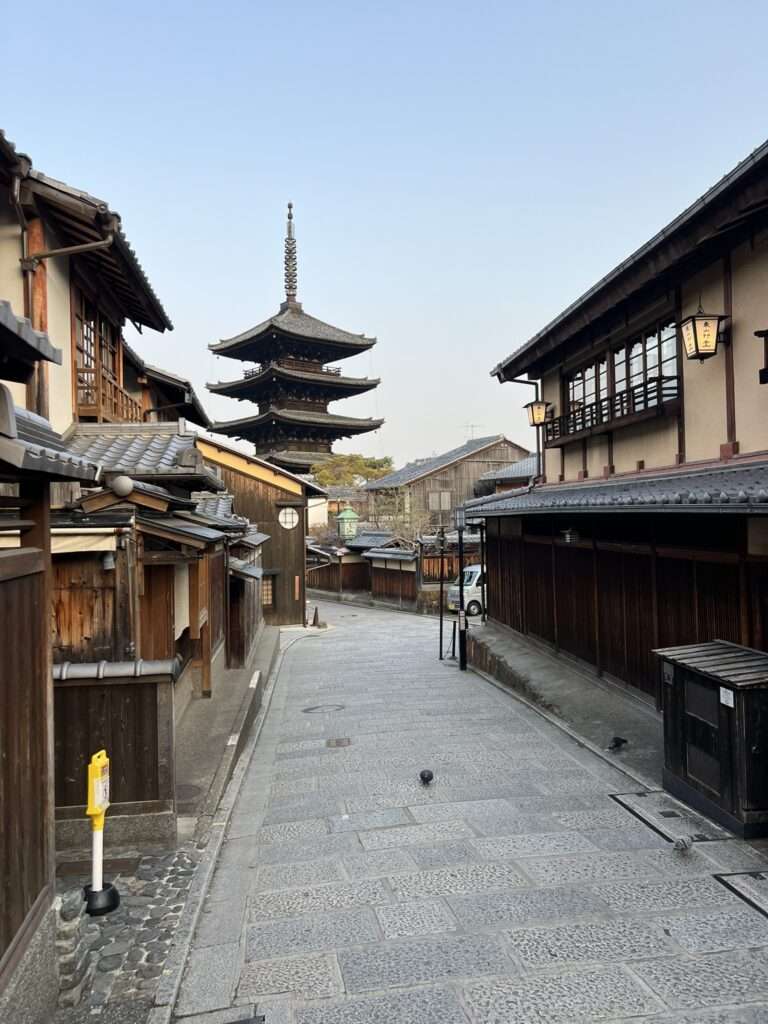
- Hokanji Pagoda: believed to have been built in 593 but then burned down and re-built many times. The current structure was reportedly built in 1440 making it one of Japan’s oldest
- Fushimi Inari Shrine: founded in 711 on the Inariyama Mountain as a dedication to Inaria Okamai the deity of prosperity and success. Today it is famous for its 1000 gates
- Kiyomizu Temple: established in 778 around a spring that was believed to cure illnesses which is how it got its name as The Pure Water Temple. It has impressive views of the city below.
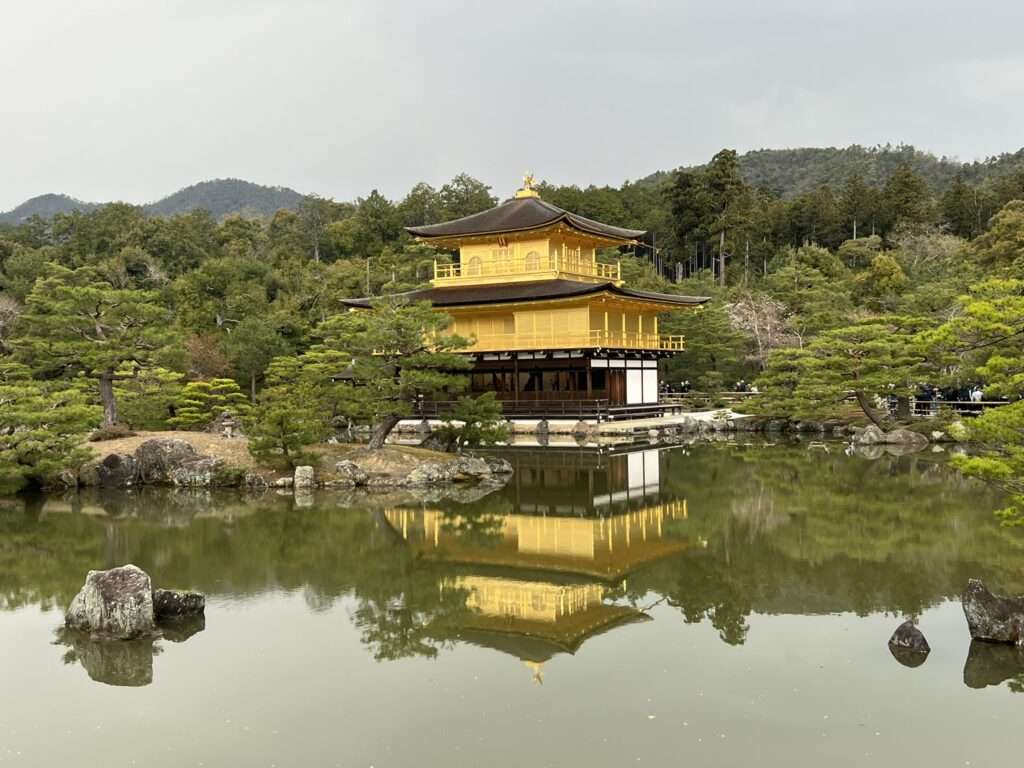
- Sanjūsangen-dō Temple: a 120 meter (394 feet) long wooden hall that houses 1,001 unique statues of the thousand armed Kannon and 28 guardian deities built in 1266
- Kinkaku-ji: initially built in 1397 but set on fire in 1950 then rebuilt again, this golden temple uses real gold leaves on the outer cover just like the original
- Higashiyama Jisho-ji: construction began in 1482 and initially was to be covered in silver foil but lacquer was used instead which still gave it a silvery appearance at night
- Nijo Castle: initially established in 1603 by the first shogun of the Edo period, it took many years to complete and is known for its nightingale floors that chirp when people are coming
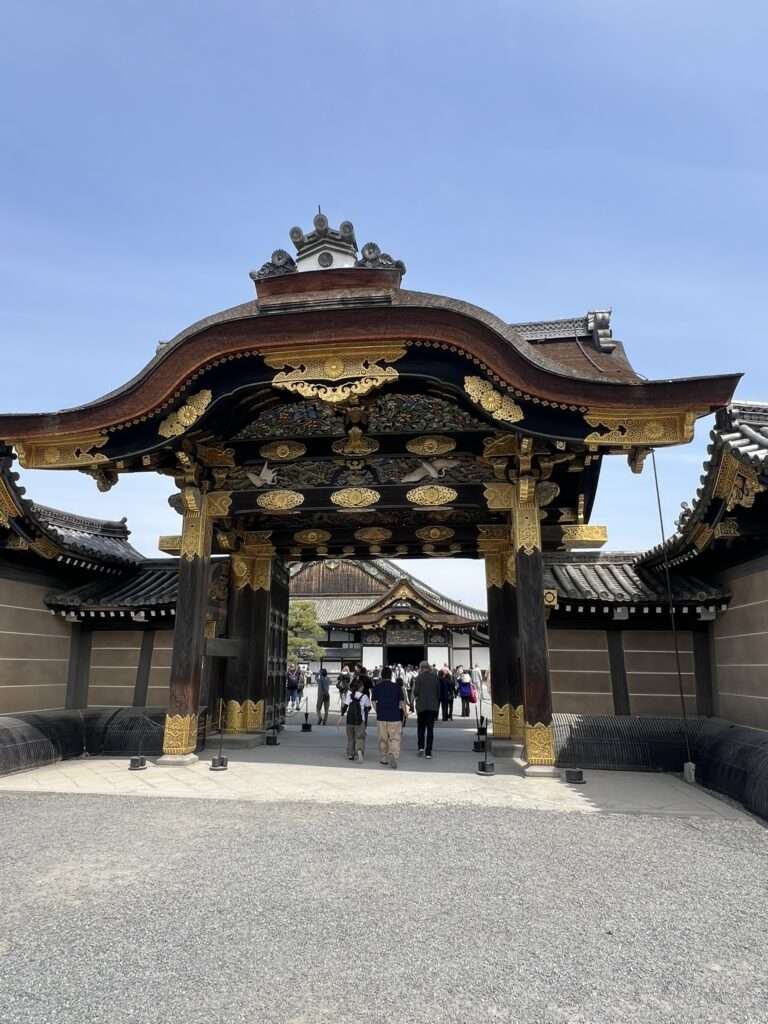
Travel Tip of the Week
Stay Overnight in Nara Before Traveling to Osaka from Kyoto
Nara is located less than an hour by train to the south of Kyoto. Many people take a day trip from Kyoto to visit, but if you are continuing your trip to Osaka, staying overnight is a great option. Spending the night in Nara eliminates an extra hour of transit back to Kyoto and gives you additional time to enjoy your time there. During the day Nara can be busy with tour groups given the large number of people that visit Kyoto. Staying overnight in Nara will allow you to have time later in the evening and early in the morning to enjoy the beautiful Nara Park in peace. After your trip to Nara, Osaka is only about an hour by train to the west which means you can have a nice start to the day in Nara and easily make it to Osaka in the afternoon for check-in.
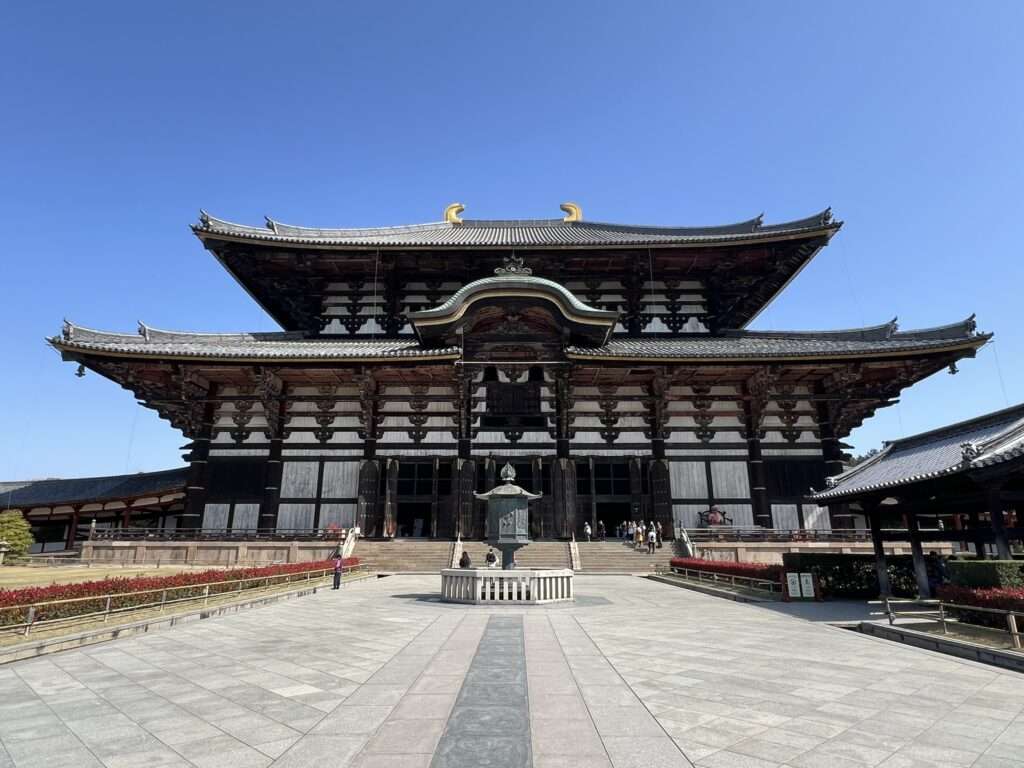
Prior to the capital moving to Kyoto, Nara held that position in the early 700s and still contains many historic temples, shrines, and heritage sites. Its most famous site is the Tōdai-ji temple originally founded in 738 and reconstructed many times over the years. Inside the temple is an enormous bronze Buddha statue. The temple opens early in the morning making it a perfect place to visit before too many tour groups arrive for the day. On the way to Tōdai-ji temple you will pass through Nara Park and likely encounter many of the docile sika deer that are just beginning their day. These deer were believed to have been sacred and so were protected for over a thousand years by the people of Nara. Even today the deer are still protected and vendors sell designated crackers to give to them. These deer now bow to people in exchange for the crackers which is a fun site to see. While accustomed to people, they are still wild animals and have been known to cause injuries especially when teased by tourists so if you do interact with them be sure to treat them with respect.
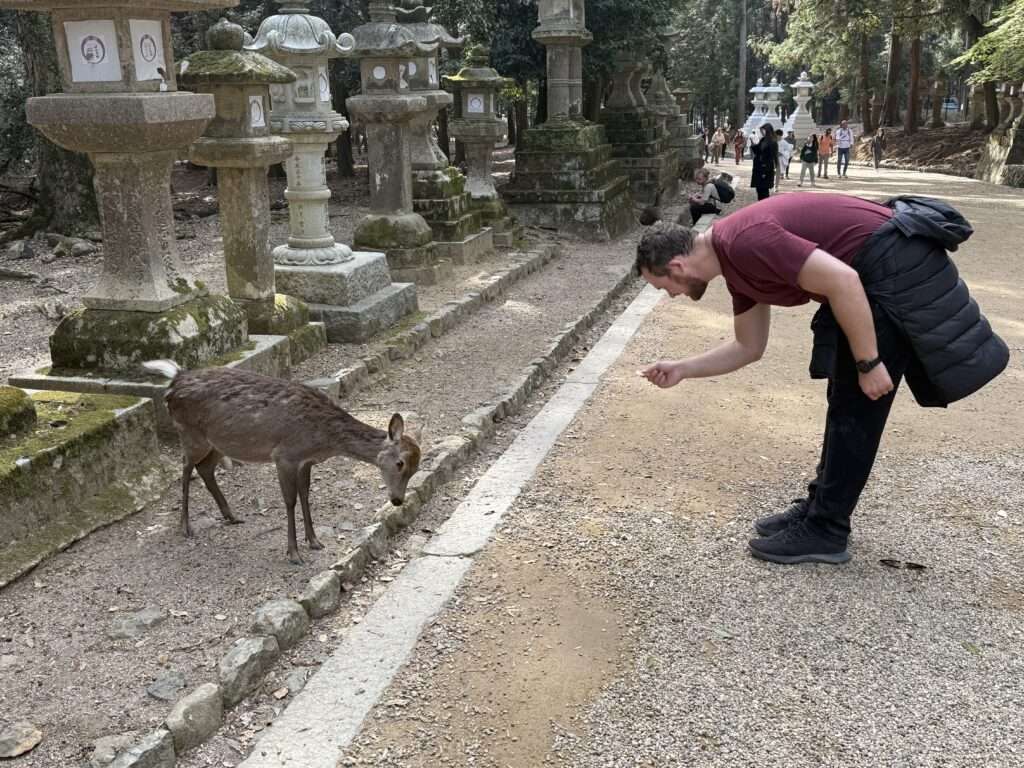
After visiting the temple and admiring the deer, Todai-ji Nigatsu-do is a hilltop hall with great views of Nara and likely will be quiet as people begin to arrive at the Tōdai-ji temple. Some other great places to visit in the park include the Yoshikien Garden, Kōfuku-ji, and Higashimuki Shopping Street. Near the shopping street you will be able to find great options for food and likely will be close to your accommodation for the night. The next morning you can return to Nara Park and stroll through without much noise to reach another of the most important historic sites of Nara, the Kasugataisha Shrine. This is an important Shinto shrine established in 768 and another popular place that will fill up with tour groups. Arriving early will allow you to take in the serenity of the shrine and park in peace before returning to town and continuing your travels on to Osaka.
